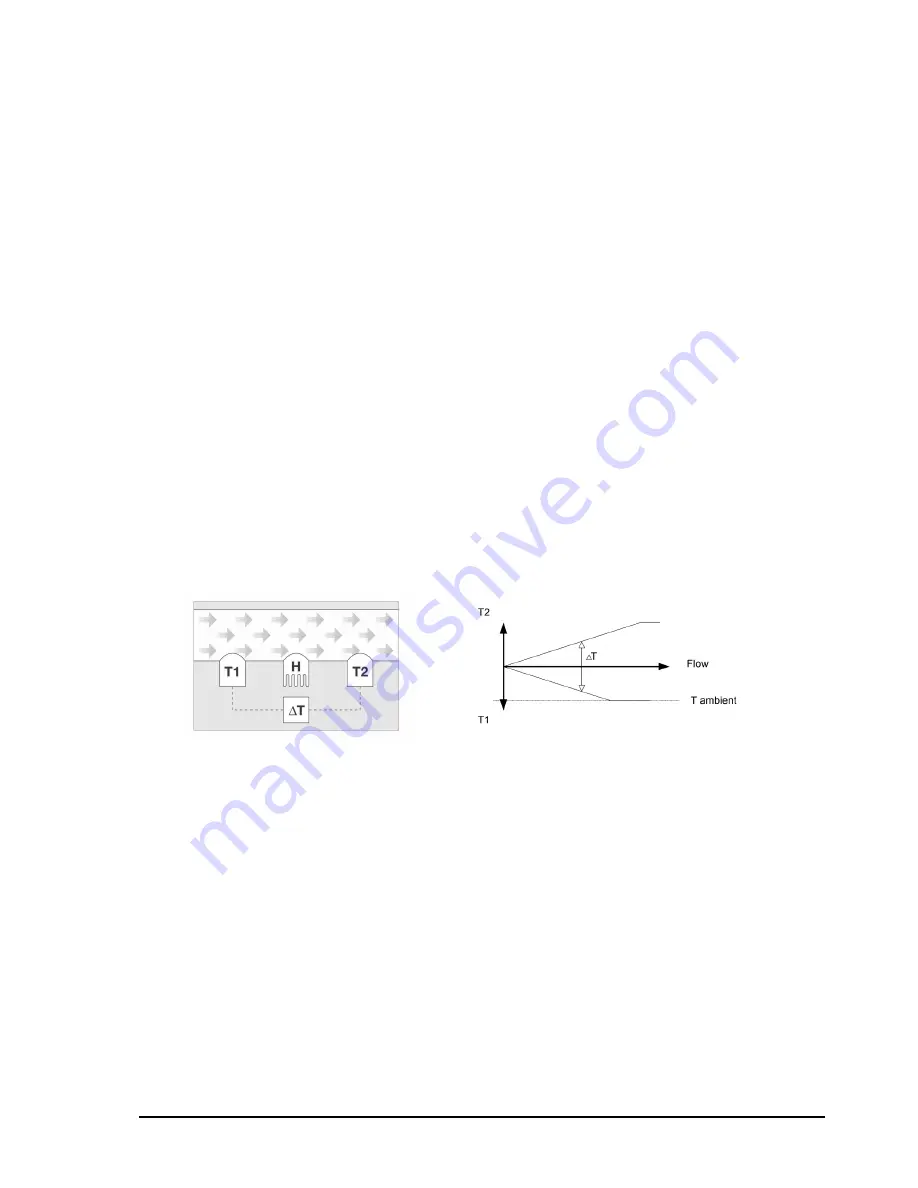
Manual
Version
Page
DB04A
EN A1-9
PKP Prozessmesstechnik
08
1.12. Instructions and warnings
Read all of the operating instructions thoroughly before installing and commissioning equipment.
Misconceptions and incorrect use can lead to breakage of the measuring device or risk of personal
injury.
The installation, commissioning and operation and maintenance must be done by appropriately
qualified personnel.
1.13. Documentation and cables supplied
Every unit comes with a USB A to USB Micro-B cable. This cable can be used to power the unit
and to upgrade the firmware.
1.14. The measurement principle
The thermal mass flow measurement principle is particularly suitable for the measurement and
control of clean and dry gaseous media. The most significant advantage is that the measurement
process measures the real mass flow and is largely independent of temperature and pressure.
Stated simply, the thermal measurement principle measures the heat transport by gas flowing past.
In the case of
DB04A
mass flow measuring instruments, a constant heat input gives a flow-
dependent temperature difference (∆T). Two temperature sensors are positioned in the measuring
channel (T1, T2), one before the heating system (H) and one after it.
If there is no flow, the heat spreads symmetrically in directions T1 and T2. The temperature
difference T1-T2 is therefore zero.
Flow rates > 0 create a temperature difference.
The sensor T1 at the inlet is cooled by the gas flowing past it, and the temperature of the second
sensor T2 rises due to the heat drawn from the heating system.
T
he temperature difference is related non-lineary to the mass flow, with very high repeatability. The
electronics will, based on the calibration, convert this temperature difference in a linear and
proportional indication of the mass flow of the gas.
Figure 1: Measurement principle
Figure 2: Sensor operation









































